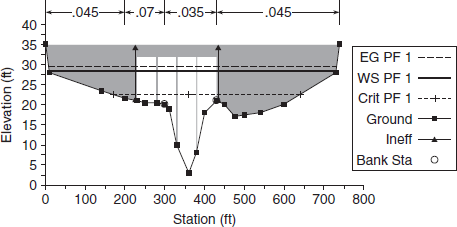


But after the extensive flood damage across Canada in the early 1970s, it was realized that prevention of flood and non-structural measures are needed to reduce flood damage. In Canada, the federal government in conjunction with provinces invested millions of dollars to control flood by building structural measures in 1950s, 1960s and 1970s.

Flood risk map is one of the effective non-structural measures widely used by many countries around the world. The flood management strategy has gradually shifted from narrow focus on structural flood control measures to a combination of structural and non-structural flood control measures and further to Integrated Flood Management (IFM). Flood management strategy continuously evolved in many flood prone countries over time. Its adverse impact includes loss of life and property, environmental degradation and shortage of food, energy, water and other basic needs. Flood is one of the greatest natural disasters to human society and it severely affects the social and economic development of a country. The potential increase of rainfall events can lead to an increase in rain generated flood. Climate change studies revealed that warming trends are linked to global hydrological cycle, such as increase in extreme precipitation. The anthropogenic gas emissions is now higher than ever, and more than half of the observed increase in global average surface temperature from 1951 to 2010 was caused by the anthropogenic increase in GHG concentration and other anthropogenic forcing together. It is also revealed that the variability of flow simulated by hydrologic model and flow area simulated by the hydraulic analyses tool are much higher than the variability of the storm depths under future climate condition. Finally, the analyses of flooding scenario revealed an average increase of water surface elevation and extents by 30 cm and 37.1 m, respectively, for a 100 year return period flood. Simulated flow results show an increase of peak flows ranging from about 26 % to 64% for 2yr and 100yr return periods at the outlet of the Creek. Frequency analysis results show that the storm depths are predicted to increase significantly under future climate. The simulated peak flows for 24hr Storm of different return periods are used as input in the HEC-RAS model for hydraulic analyses.

The design storm depths calculated from the observed and climate model simulated data are used as input into an existing Visual OTTHYMO model of the study area for flow simulation. The storm depths were calculated by using the best fitted distribution among twenty seven distributions. First, the storm depths for different return periods and durations were calculated from the observed rainfall data and the North American Regional Climate Change Assessment Program (NARCCAP) climate simulations. This study involves the climate change impact analysis of design storms, peak flows and flooding scenario for the Clearview Creek drainage area located in Southern Ontario, Canada. Increase in precipitation depth will lead to higher peak flows, and will bring floods with higher inundation depths and larger extends. Climate model projections indicate that the frequency and magnitude of hydrological extremes will increase in a future climate due to increasing concentration of greenhouse gases.


 0 kommentar(er)
0 kommentar(er)
